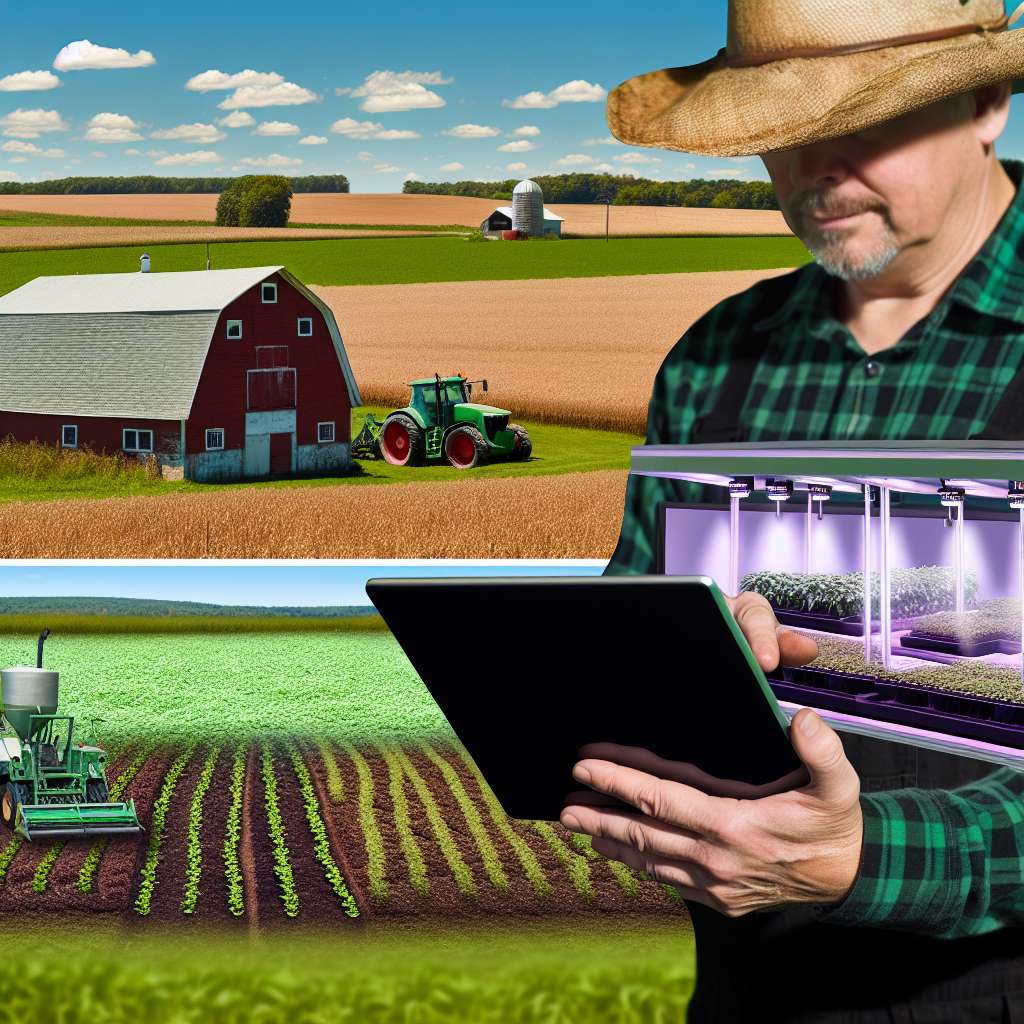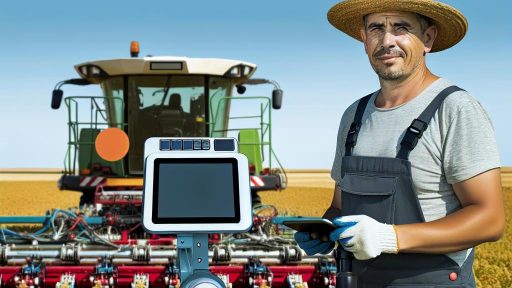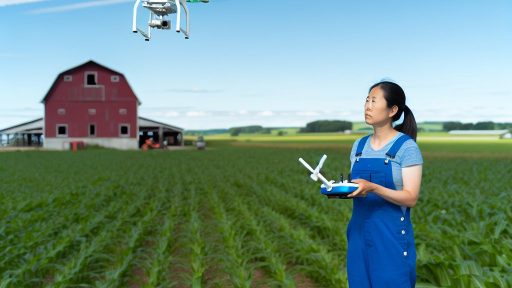Definition and Overview of Controlled Environment Agriculture (CEA)
Understanding Controlled Environment Agriculture
Controlled Environment Agriculture refers to the production of food in a controlled environment.
This method includes techniques such as hydroponics, aquaponics, and aeroponics.
These systems optimize plant growth by controlling environmental variables.
Some key variables include light, temperature, humidity, and nutrient levels.
CEA allows for year-round crop production regardless of external weather conditions.
Benefits of Controlled Environment Agriculture
CEA offers several advantages over traditional farming methods.
First, it significantly increases crop yield per square foot.
Second, it enhances water efficiency compared to conventional irrigation systems.
Moreover, it reduces the need for pesticides and herbicides.
This practice minimizes the impact of pests and diseases on crops.
Integrating CEA with Traditional Farming
Farmers can benefit from integrating CEA into their existing practices.
This integration allows for the diversification of crop production.
Furthermore, it can extend the growing season for many crops.
Traditionally grown crops can be enhanced with controlled conditions.
This hybrid approach can lead to more sustainable farming practices.
Transform Your Agribusiness
Unlock your farm's potential with expert advice tailored to your needs. Get actionable steps that drive real results.
Get StartedBenefits of Integrating CEA with Traditional Farming Practices
Enhanced Yield and Quality
Controlled Environment Agriculture (CEA) significantly boosts crop yield.
This farming method allows year-round production, regardless of climate conditions.
Moreover, the produce often exhibits higher quality and nutritional value.
Farmers can achieve consistent results due to optimized growing conditions.
Resource Efficiency
CEA decreases the amount of water needed for crops.
Hydroponics and vertical farming require less land than traditional methods.
Moreover, these techniques reduce the use of pesticides and fertilizers.
As a result, farmers can lower costs while improving sustainability.
Improved Pest and Disease Management
CEA environments are easier to control for pests and diseases.
Increased surveillance allows farmers to identify issues faster.
Consequently, integrated pest management strategies become more effective.
This leads to healthier crops with fewer chemical treatments.
Market Diversification
Integrating CEA opens up new market opportunities for farmers.
Farmers can grow specialty crops that may not thrive in traditional farms.
Additionally, local markets benefit from fresh produce year-round.
Thus, consumers enjoy a greater variety of food choices.
Economic Resilience
Combining CEA with traditional farming increases business resilience.
Farmers can withstand market fluctuations better with diverse crops.
This integration enhances overall farm profitability.
Furthermore, farmers can adapt to changing consumer preferences quickly.
Technological Advances Enabling CEA Adoption in Traditional Farms
Automation and Robotics
Automation is revolutionizing traditional farming practices.
Robotic systems can streamline tasks like planting and harvesting.
These innovations reduce labor costs and increase efficiency.
Farmers like Olivia Chen have already adopted automated systems.
Showcase Your Farming Business
Publish your professional farming services profile on our blog for a one-time fee of $200 and reach a dedicated audience of farmers and agribusiness owners.
Publish Your ProfilePrecision Agriculture
Precision agriculture enhances decision-making for farmers.
It collects data on soil, crops, and climate conditions.
Farmers can make informed decisions based on this data.
This ultimately leads to better yields and resource conservation.
Hydroponics and Aquaponics
Hydroponic systems allow crops to grow without soil.
They use nutrient-rich water to support plant growth.
Aquaponics combines fish farming with hydroponics.
This creates a sustainable ecosystem for both plants and fish.
Farmers like Marcus Rodriguez have successfully integrated these systems.
Smart Sensors and IoT
Smart sensors monitor environmental conditions in real-time.
These sensors track temperature, humidity, and nutrient levels.
Farmers can adjust conditions quickly for optimal growth.
Integrating IoT devices increases the efficiency of traditional farms.
Data Analytics
Data analytics plays a critical role in modern agriculture.
Farmers can analyze trends to improve crop management.
Advanced software provides insights into yield predictions.
This information helps farmers strategize better for the future.
Sustainable Practices
Technological advances support sustainable farming practices.
Farmers can use technology to minimize waste and pollution.
They can optimize resource use, including water and fertilizers.
This commitment to sustainability resonates with consumers and improves marketability.
Explore Further: Troubleshooting Common Issues With Automated Machinery
Case Studies: Successful Integration of CEA in Various Regions
North America
In California, a partnership between Green Leaf Farms and local farmers exemplifies successful integration.
This collaboration focuses on vertical farming techniques and advanced greenhouse systems.
As a result, crop yields have increased by 30% compared to traditional methods.
Farmers now access data-driven insights to optimize water usage and nutrient delivery.
Additionally, their carbon footprint has decreased significantly.
South America
In Brazil, AgriTech Solutions has introduced aeroponic systems to coffee farmers.
This shift allows farmers to produce coffee year-round, regardless of weather conditions.
Farmers have reported a 25% increase in quality and consistency of their beans.
Furthermore, water consumption has been reduced by 50% due to the new systems.
This integration has opened new markets for these farmers.
Europe
In the Netherlands, urban farming is thriving in Amsterdam.
Companies like Urban Grow focus on hydroponic systems within city limits.
This initiative not only provides fresh produce but also beautifies urban landscapes.
As a result, local communities have embraced the concept, boosting urban biodiversity.
Moreover, these farms provide educational workshops for residents.
Asia
Japan’s cultivation techniques showcase successful CEA integration in small-scale farms.
The use of smart sensors allows farmers to control their environments accurately.
This approach has led to a 40% reduction in production costs.
Showcase Your Farming Business
Publish your professional farming services profile on our blog for a one-time fee of $200 and reach a dedicated audience of farmers and agribusiness owners.
Publish Your ProfileFurthermore, the technology enables finer control over pest management.
This innovation attracts younger people to agriculture.
Africa
In Kenya, Sustainable Agriculture Initiative has implemented CEA in rural settings.
This initiative supports smallholder farmers using low-cost greenhouse tech.
Farmers are now growing vegetables that previously required extensive irrigation.
This model has led to food security improvements for many families.
Additionally, it opens opportunities for local economies.
Discover More: A Farmer’s Guide To Utilizing Drones In Agriculture
Challenges and Solutions in Implementing CEA in Existing Farms
Understanding the Key Challenges
Farmers face several challenges when integrating Controlled Environment Agriculture (CEA) into existing operations.
High initial costs often deter farmers from investing in CEA technologies.
These technologies require significant financial investment in infrastructure and equipment.
Additionally, farmers may lack knowledge concerning CEA techniques.
This gap in understanding can create resistance to adopting new methods.
Moreover, inconsistent regulatory frameworks complicate CEA implementation.
Farmers must navigate varying laws and standards based on local conditions.
Finally, resource availability plays a crucial role in adoption.
Some farmers may struggle with access to necessary materials or expert support.
Identifying Practical Solutions
Addressing these challenges requires a strategic approach with viable solutions.
First, establishing financial assistance programs can ease initial costs.
Governments or organizations could offer grants and low-interest loans.
Secondly, educating farmers on CEA benefits is crucial.
Workshops and training sessions can raise awareness and comprehension.
Thirdly, advocating for clearer regulatory guidelines is essential.
Standardizing regulations can simplify the integration process for farmers.
Lastly, creating partnerships with agricultural technology firms enhances support.
These collaborations can provide resources and expertise critical for successful implementation.
Investing in Technology and Innovation
Leveraging technology can significantly enhance CEA’s effectiveness in traditional farms.
Farmers should consider automation to optimize resource use.
Implementing sensors and control systems fosters better monitoring of environmental variables.
Moreover, investing in software applications can streamline operations.
Farm management software helps in planning and analysis for improved decision-making.
Furthermore, adopting hybrid models can showcase immediate benefits.
Combining traditional farming methods with CEA elements can be more practical.
Building Community Support
Community support plays a pivotal role in successful CEA integration.
Engaging local agricultural groups fosters an environment conducive to learning.
Farmers can share experiences and best practices through such networks.
Additionally, collaborating with universities enhances research and development opportunities.
These partnerships can lead to innovative solutions tailored to local needs.
Discover More: Precision Agriculture Software Optimizing Sustainable Farm Management

Environmental Impact of Combining CEA with Traditional Agriculture
Enhancing Resource Efficiency
Integrating controlled environment agriculture (CEA) improves resource efficiency in farming.
Showcase Your Farming Business
Publish your professional farming services profile on our blog for a one-time fee of $200 and reach a dedicated audience of farmers and agribusiness owners.
Publish Your ProfileThis approach uses significantly less water than traditional methods.
Efficiency in nutrient use also increases with CEA practices.
Consequently, these practices lead to reduced chemical runoff into surrounding ecosystems.
Minimizing Carbon Footprint
Applying CEA reduces the carbon footprint associated with food production.
Farmers can grow crops closer to urban areas, minimizing transportation emissions.
Additionally, vertical farming techniques allow for higher yields on smaller land areas.
Thus, fewer natural resources are consumed in the process.
Supporting Biodiversity
Combining CEA with traditional farming encourages biodiversity on agricultural land.
The diversification of crops within controlled environments supports local wildlife.
Crop rotation and intercropping strategies also play a vital role in this integration.
As a result, farms become more resilient to pests and diseases.
Mitigating Land Degradation
Utilizing CEA can help combat land degradation from traditional agriculture.
By preventing soil erosion through improved farming techniques, CEA promotes sustainability.
Additionally, soil health is enhanced through careful management practices.
Consequently, the soil remains fertile for future generations.
Addressing Climate Change Challenges
CEA provides solutions to the challenges posed by climate change.
Controlled environments can withstand extreme weather events much better.
Farmers can maintain consistent growing conditions regardless of external climate fluctuations.
This adaptability ensures a stable food supply amid changing environmental conditions.
See Related Content: Optimizing Farm Operations Through IoT Technologies
Economic Analysis
Cost-Benefit of CEA Adoption for Farmers
Adopting Controlled Environment Agriculture (CEA) involves various costs and benefits for farmers.
First, let’s examine the initial investment required for CEA systems.
Farmers must consider the costs of infrastructure, technology, and equipment.
These expenses can be daunting for many traditional farmers.
However, the potential for increased yields often offsets these costs.
Secondly, CEA can lead to reduced resource usage.
Farmers can save on water and fertilizer, which lowers operational costs.
Further, CEA allows for year-round crop production.
This capability can significantly increase a farmer’s revenue stream.
In addition, CEA minimizes the risk of crop failure due to unpredictable weather.
As a result, farmers enjoy greater stability in their income.
Next, let’s explore sustainability as another financial factor.
CEA practices can attract eco-conscious consumers.
These individuals often prefer sustainably grown produce and may pay a premium.
Thus, adopting CEA can improve market positioning for farmers.
Consequently, the long-term economic benefits are substantial.
However, it’s vital for farmers to assess their individual circumstances.
Every farming operation has different financial capabilities and goals.
In addition, local market demands can influence the feasibility of CEA.
Farmers should conduct thorough financial analyses before making decisions.
Showcase Your Farming Business
Publish your professional farming services profile on our blog for a one-time fee of $200 and reach a dedicated audience of farmers and agribusiness owners.
Publish Your ProfileUltimately, CEA represents a promising opportunity for many traditional farmers.
By weighing the initial costs against the potential long-term benefits, informed choices can be made.
Thus, considering CEA’s impact on both profitability and sustainability is crucial.
Future Trends: The Role of CEA in Sustainable Farming Practices
Introduction to Controlled Environment Agriculture
Controlled Environment Agriculture (CEA) includes various farming methods.
This includes hydroponics, aeroponics, and vertical farming.
CEA significantly enhances crop production efficiency.
Moreover, it plays a crucial role in sustainable agriculture practices.
Benefits of Integrating CEA
One major benefit is resource efficiency.
CEA uses less water compared to traditional farming methods.
Additionally, it utilizes space more effectively.
This aspect is especially important in urban areas.
Reduction of Chemical Inputs
CEA systems often require fewer pesticides and fertilizers.
This leads to lower environmental impact.
Furthermore, the crops grown in CEA are often healthier.
Year-Round Production
CEA enables year-round crop production.
This stability helps meet food demands consistently.
It also mitigates the risks associated with seasonal farming.
Integration with Traditional Farming
Integrating CEA into traditional farms can optimize yields.
Farmers can adopt CEA techniques gradually.
This flexibility makes the transition easier and more manageable.
Training and Education
Education and training facilitate the effective integration of CEA.
Workshops and online resources can support farmers’ understanding.
Networking with CEA experts enhances this learning process.
Adapting Infrastructure
Traditional farms may need infrastructure adaptations to support CEA.
Installing greenhouses or hydroponic systems offers potential solutions.
This adjustment helps in maximizing the benefits of CEA.
Future Perspectives
The future of agriculture lies in the collaboration between CEA and traditional methods.
Innovations in technology can enhance both efficiency and productivity.
Moreover, sustainable practices will become increasingly vital.
Government Policies and Support
Supportive government policies can significantly impact CEA adoption.
Incentives for sustainable practices drive farmer interest.
This collaborative effort fosters sustainable farming practices overall.
Community Engagement
Engaging local communities promotes awareness of CEA benefits.
Farmers can partner with businesses and educational institutions.
This collaboration enhances sustainability efforts in agriculture.
Additional Resources
Hydroponics: current trends in sustainable crop production – PMC




